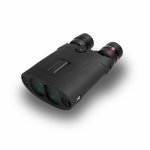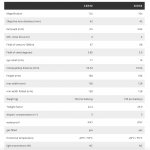I currently do all my birding at 8x: primarily, 8x25 and 8x32, for which I have very good binoculars.
This works very very well for me, except that occasionally (not that occasionally) I have difficulty identifying birds due to low magnification.
Example: this Sunday I went to visit a pond in a place where I hadn't been so far. I saw several new (to me) species, but I also had difficulty identifying:
Should I get a Canon 15x50 IS? Or a Nikon scope ED 50? Or nothing?
In favor of the Canon, I think it would be easier to point. Yes, I would have to pull it out of the backpack (I would likely continue to use the 8x32 normally), but once out, when the birds land again e.g. on the tall tree, it would be easier / faster for me to acquire them with the Canon 15x50 IS.
In favor of the ED 50 scope, it is lighter to carry in the backpack (and as I mentioned, I am likely to continue using my 8x32 for my normal viewing). Yes I would need also a tripod, and I wonder in fact if I could get away with a monopod. But once with that, it would give me higher magnification. The fear I have is that neither the duck, nor the warblers, were staying put, and I am afraid that tracking or acquiring something with the scope is going to be tricky. I can afford, if I really wanted, the more expensive Leica / Zeiss scopes, btw, but I am not considering them now -- I would only get them once I truly know that a scope is what I need, and once I already had experiences with other scopes.
A scope might also enable me to more easily identify squirrels etc from my home -- but again, those also do not stay put, and tracking them with a scope might be challenging.
In favor of doing nothing is the fact that overall, I still in the end managed to identify most of what I saw (exceptions made for some farther away ducks, and some birds on other farther trees). Challenges are nice, and there is much to be said for a simpler setup that allows me to enjoy the outing more.
At the moment, I am leaning towards "nothing". Do you have any advice for me?
This works very very well for me, except that occasionally (not that occasionally) I have difficulty identifying birds due to low magnification.
Example: this Sunday I went to visit a pond in a place where I hadn't been so far. I saw several new (to me) species, but I also had difficulty identifying:
- Ducks that were in a far part of the pond I could not reach. I could see them with my 8x, but it took me a lot of squinting to decide they must have been Blue-winged Teal.
- Birds high up on a tree. If I went under the tree, they were behind foliage. If I climbed a small mound to have a better view and be more at the proper angle, they were small with the 8x. Only after a LOT of effort did I identify some of those as yellow-rumpled warblers.
Should I get a Canon 15x50 IS? Or a Nikon scope ED 50? Or nothing?
In favor of the Canon, I think it would be easier to point. Yes, I would have to pull it out of the backpack (I would likely continue to use the 8x32 normally), but once out, when the birds land again e.g. on the tall tree, it would be easier / faster for me to acquire them with the Canon 15x50 IS.
In favor of the ED 50 scope, it is lighter to carry in the backpack (and as I mentioned, I am likely to continue using my 8x32 for my normal viewing). Yes I would need also a tripod, and I wonder in fact if I could get away with a monopod. But once with that, it would give me higher magnification. The fear I have is that neither the duck, nor the warblers, were staying put, and I am afraid that tracking or acquiring something with the scope is going to be tricky. I can afford, if I really wanted, the more expensive Leica / Zeiss scopes, btw, but I am not considering them now -- I would only get them once I truly know that a scope is what I need, and once I already had experiences with other scopes.
A scope might also enable me to more easily identify squirrels etc from my home -- but again, those also do not stay put, and tracking them with a scope might be challenging.
In favor of doing nothing is the fact that overall, I still in the end managed to identify most of what I saw (exceptions made for some farther away ducks, and some birds on other farther trees). Challenges are nice, and there is much to be said for a simpler setup that allows me to enjoy the outing more.
At the moment, I am leaning towards "nothing". Do you have any advice for me?








